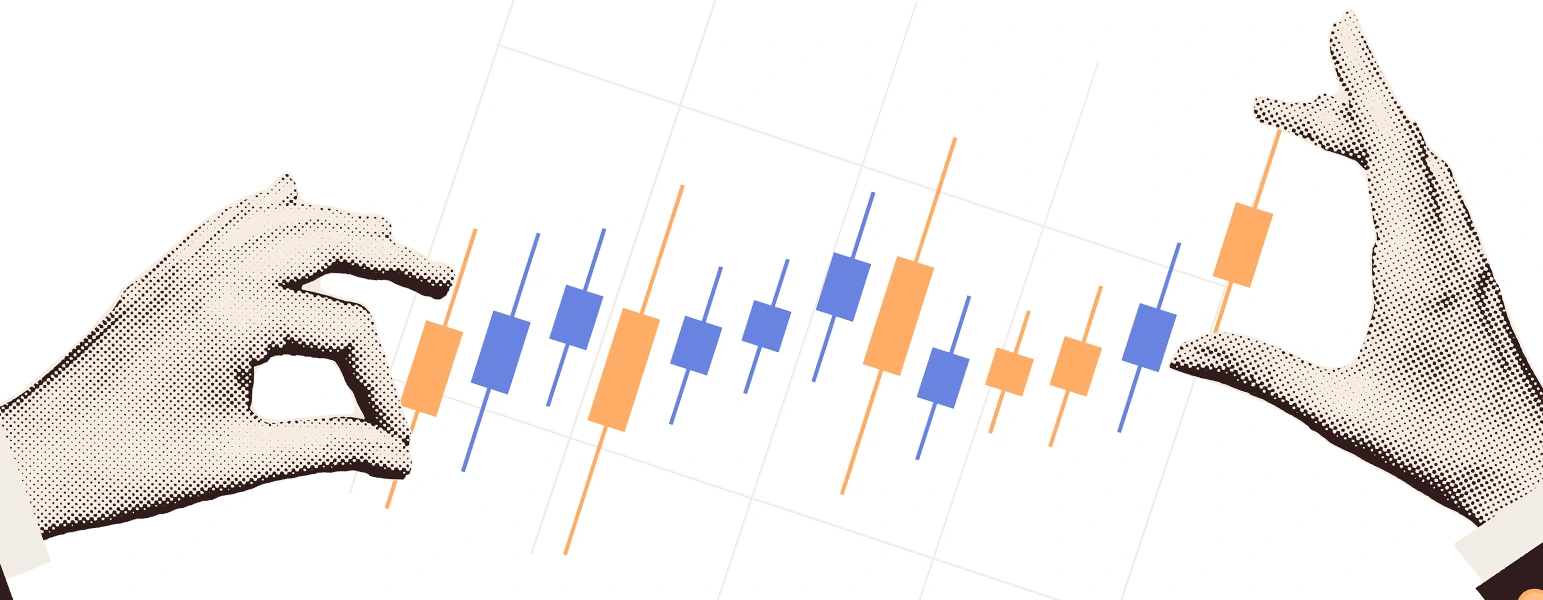Explore the world of financial trading and
gain the knowledge and tools for success with our expertly
written articles and blogs.

HOW TO DEVELOP A PERSONALIZED TRADING PLAN?

Anyone who’s tried their hand at stocks, forex, or crypto knows this rollercoaster all too well. But the people who make it out alive, and even thrive, aren’t just lucky. They’ve got a map. A personalized trading plan. It’s not some fancy Wall Street secret; it’s a practical, down-to-earth tool that anyone can build. So, how does someone create one? Let’s walk through it, step by step, with real-life lessons and a little grit thrown in.
Why Bother with a Plan?

Take for example a person got $2,000 saved up, a laptop, and a hunch that Tesla’s about to skyrocket. No plan, just vibes. Two weeks later, he’s down $800, kicking himself for selling too early, or not selling at all. Sound familiar? That’s what happens without a plan. Markets don’t care about hunches. They’re brutal, fast, and unforgiving. A trading plan isn’t just a safety net, it’s a compass. It keeps someone steady when panic sets in or when that little voice whispers, “Double down, you’ll make it back.”
Now think of someone who started trading part-time. A year later, he is up 20%, not because he is a genius, but because he had a system that fit her life. That’s the magic of making it personal, it’s not about copying someone else’s playbook, it’s about writing your own.
Step 1: Figure Out What You Want
Goals aren’t fluffy wishes, they’re the stakes in the ground that hold the whole plan together. Someone’s got to sit down and ask: What am I chasing? How much do I need? When do I need it by?
Suppose you got $5,000 and a five-year plan to buy a fixer-upper house. Your goal? Turn that $5,000 into $15,000. Then there are people who wants $500 a month from dividends to keep their hobbies alive. Their plans won’t look the same,
Step 2: Know Your Limits

Here’s where it gets personal: how much can someone lose before they’re pacing the kitchen at 3 a.m.? Risk tolerance isn’t just about money, it’s about gut. Some people love the thrill of a big bet; others feel sick watching a $50 dip. Figuring this out shapes the whole game.
Consider Raj, a 35-year-old teacher with a mortgage. He’s not about to risk his kid’s college fund, he sticks to safe bets, maybe 1% of his cash per trade. Then there’s Zoe, 24, single, no debts, who’s fine tossing 5% into a wild crypto ride. Neither’s wrong; they’re just wired differently. The trick is asking: What’s my breaking point? How much can I lose and still sleep? A good starting line is risking no more than 1-2% of the pot on any trade. It’s not sexy, but it keeps someone in the game.
Step 3: Pick Your Playground
Stocks, forex, options, crypto, each market’s got its own vibe. Same goes for trading styles. Day trading’s a sprint, all adrenaline and quick calls. Swing trading’s more like a hike, steady, thoughtful steps. Long-term investing? That’s a marathon, pacing for years. The right fit depends on the trader’s life, not some hot tip from a YouTube guru.
Step 4: Nail Down the Rules
No rules, no dice. A trading plan needs guardrails, when to jump in, when to cash out. Without them, it’s all emotion, and emotion’s a lousy trader. Entry rules might come from charts, like “Buy when the price breaks this line,” or news, like “Buy if earnings beat expectations.” It’s got to be clear, something repeatable.
Step 5: Size It Right

How much to bet? That’s position sizing, and it’s a tightrope walk. Too much, and one slip trashes the account. Too little, and gains feel like pocket change. The 1% rule’s a classic: don’t risk more than 1% of the total stash per trade. For $10,000, that’s $100. If the stop-loss is 2% below entry, they figure out how many shares keep the loss at $100. It’s math with a purpose.
For example, take a part-time trader with $3,000. He risks 1%, $30, per trade. His stop’s 10 cents below entry, so he buys 300 shares. It’s not rocket science, but it keeps him from betting the farm. Losses sting less, and wins add up.
Step 6: Stick to a Rhythm
Trading’s not a hobby you pick up when you’re bored, it’s a habit. A plan needs a routine: when to scout trades, when to pull the trigger, when to look back. Maybe it’s 20 minutes over breakfast or an hour on Sunday plotting the week. It’s got to mesh with real life.
Keeping a journal’s part of it, scribbling down every trade, the why, the what, the how much. Over months, it’s a goldmine. Did mornings work better than afternoons? Did gut calls flop? A person who tracked his trades will see that he tanked every time he traded mad. Whenever he started waiting out his moods, profits climbed.
Step 7: Roll with the Punches
Life shifts. Markets shift. A plan’s not a tattoo, it bends. Maybe someone starts with stocks, then tries futures. Or a kid comes along, and big risks feel dumb. Adapting keeps it fresh. When Tara, a trader, got a promotion, her hours shrank, she ditched day trading for ETFs. It wasn’t failure; it was growing up.
Watch the Traps
Even solid plans trip up if someone’s sloppy. Overtrading’s a killer, piling into trades just to feel busy. Ignoring rules when the market’s screaming? Disaster. Chasing losses with bigger bets? Kiss the account goodbye. And skipping homework, new strategies, market shifts, leaves them stuck. Discipline’s the glue.
Wrapping Up
Building a trading plan isn’t quick. It’s messy, personal, and takes trial and error. Start with a goal, weigh the risks, pick a lane, set rules, size bets, build a rhythm, and tweak as you go. It’s not about being perfect, it’s about being ready. For Mike, Clara, or anyone, a plan turns trading from a coin flip into a craft. It’s their story, their rules, their shot at winning.
All blogs
©TRUST TRAINING AND DEVELOPMENT INSTITUTE 2025
Disclaimer: Trust Institute is a KHDA-licensed educational institution based in Dubai, UAE. All training programs, materials, and content offered through our website and in-person sessions are provided strictly for educational purposes. We do not offer financial or investment advice, and we do not engage in or promote any trading activity.
Our courses are designed to increase knowledge and understanding of financial markets. Trust Institute is not a brokerage firm, does not manage client funds, and does not participate in any trading on behalf of its students.
Participation in financial markets, including Forex trading, involves significant risk and may not be suitable for everyone. Individuals are encouraged to conduct their own research and consult with licensed financial professionals before making any financial decisions.
By accessing our content or enrolling in our courses, you acknowledge and accept that Trust Institute is not liable for any financial outcomes resulting from the application of educational material shared. You agree that your use of this information is at your own discretion and responsibility.
Trust Institute is fully licensed and regulated by the Knowledge and Human Development Authority (KHDA) in Dubai, United Arab Emirates.






































